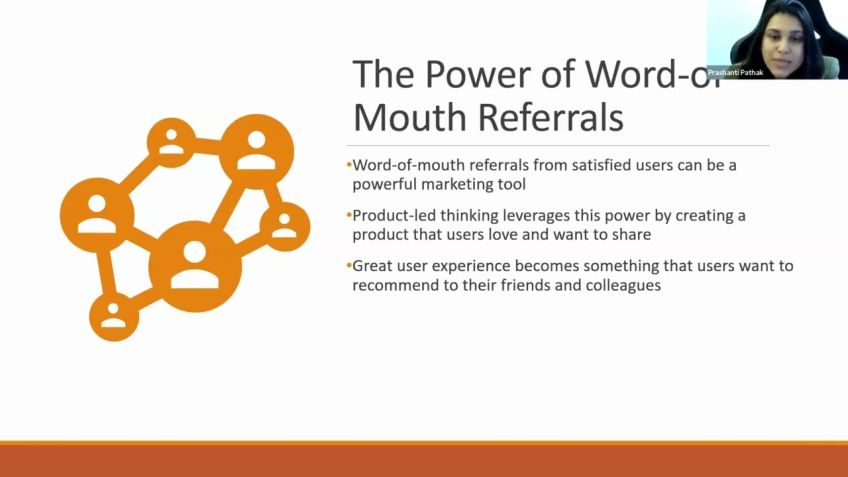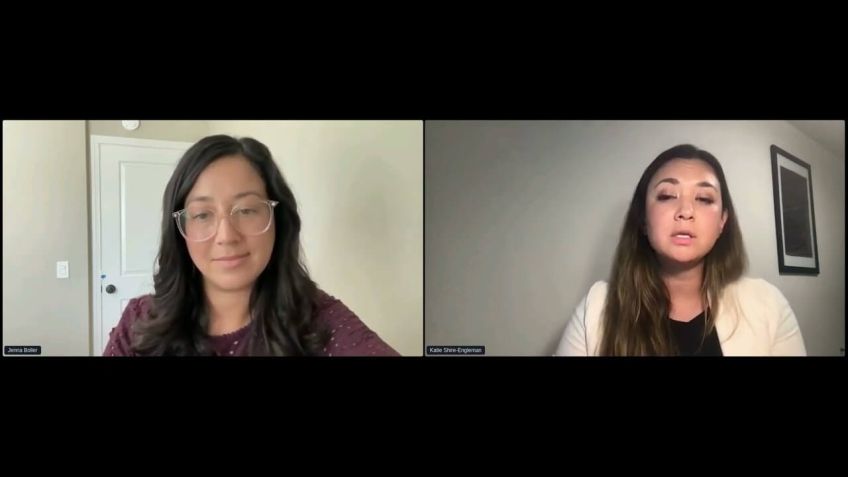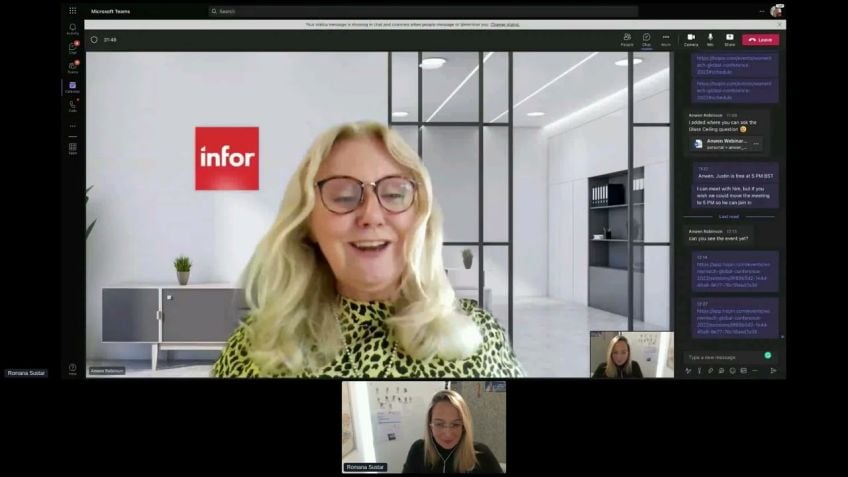How marketers can capture $27 trillion in assets
Capturing $27 Trillion in Assets by Marketing to Generation D
Hello, I am Lauren Vaccarello, the Chief Marketing Officer at Talent. Thrilled to discuss an interesting topic today: marketing to Generation D, a new generation of data-savvy people reshaping consumer behavior. These are individuals who hail from different age demographics, including millennials, Gen Xers, and baby boomers. They are the "always-native" segment that can't imagine a world without computers, mobile phones, the internet, and they pack in 11 hours of entertainment into just 7.5 hours!
According to a study by Accenture, in the US alone, there are more than 75 million people classified as Generation D, controlling nearly $27 million in assets. And the most intriguing part? The reach of Generation D is not limited to consumers solely but includes individuals with different facets of interests like activists, marketers, and educators.
Respect and Trust: The Hallmark of Marketing to Generation D
Generation D is not just a consumer set; it's a lifestyle demographic. In a world where their online personas are authentically expressive of their true selves, it's crucial for marketers to adjust their strategies to reach them. For a successful outreach, marketers need to maintain what is called an Identity Trust Cycle. This cycle implies that brands need to respect and reciprocate the Generation D's consumer expression of identity for a continued trust relationship.
Let's look at a typical example of this with Starbucks. In this case, if the consumer shares the company's commitment to responsibility, they'd likely post about it online, creating a voluntary promotion for Starbucks. This helps businesses match the online personality of their consumers, creating a trust cycle and, in turn, a loyal customer base.
Integrating the Identity Trust Cycle into Marketing Campaigns
Generation D demands more than product promotions; they need brands to engage with them, respect their values, and align with those values. A successful example would be Nike's ads with Colin Kaepernick, where they demonstrated understanding and alignment with the social issues their target audience cares about.
Another effective strategy to maintain the identity trust cycles during campaigns is leveraging collected data for meaningful engagement, the way companies like Stich Fix and Tlol have done. They utilize data to provide insights into customer behavior and buying habits, yielding more personalized experiences with their consumers.
Understanding Generation D and Zero-Party Data
With the end of third-party cookies imminent, businesses must find new ways to reach out and create meaningful engagement with their consumers. For businesses marketing to Generation D, the future lies in the utilization of zero-party data.
Zero-party data presents an opportunity for businesses to build a complete identity of their consumers by asking questions about their preferences. Companies like Stitch Fix use style quizzes to identify their potential customers' interests, leading to better products, interactions, and personalized experiences. This way, they build a trusted connection with their patron, enabling them to curate better experiences.
The Ever-Changing Consumption Habits of Generation D
Generation D buyers have a quirky paradox in their consumption habits. They welcome brand engagement, especially when it includes incentives but at the same time, frown at explicit advertising. This generation cares greatly about data privacy and holds companies responsible for communicating trust. Hence, there is increasing pressure for brands to not only reveal their data but also their shared values.
As a marketer, you must not only be transparent about what data you are collecting but also about who you are as a business. An engagement strategy with members of Generation D ought to be a partnership, not a monologue. It involves making them feel special, appealing to their values, and creating a personalized experience through a robust customer 360 framework based on opted-in data.
Final Thoughts on Marketing to Generation D
Generation D represents an exciting, diverse market. Not only are they open to sharing, but they also have high standards for trust and transparency. Their presence is urging marketers to be more creative in earning trust and brand loyalty. The golden rule to remember when marketing to Generation D is: treat them just as you would want to be treated.
Therefore, to tap into Generation D's massive potential, transparency must be your first language. Show clearly who you are as a business, understand their values, and align your operations with these values.
Demonstrate that you care about them by creating a personalized experience and building an engaging partnership in the entire process. The future does not just lie in product development; it calls for deep, personalized experiences built on trust and transparency.
Got questions? Feel free to ask, and remember, marketers are now required to be more connected with their customers than ever before!
Video Transcription
And hopefully you're all as excited as I am to talk about how marketers can capture uh $27 trillion in assets by marketing to generation D. So, uh like I said, we're gonna start talking about marketing to generation D. My, my name is Lauren Vaccarello.I'm the chief marketing officer at talent and really here and really happy to discuss this topic with you. Uh So as many of, you know, there's a new generation of data savvy people that are reshaping consumer behavior and these folks can't imagine a world without computers, mobile phones, the internet, they haul, they mod they hack, they are multitaskers. It's a generation that packs in 11 hours of entertainment into 7.5 hours. Uh So to put this into perspective, uh accenture, there was a study by accenture that found that there's more than 75 million people in the US that are classified as generation D and they have nearly $27 million in assets. What is really um fascinating about generation D is it transcends ages? It includes Gen Xers and baby boomers. Uh The most significant chunk of generation D is for consumers as millennials, but it's not just about consume, they're not just consumers.
They are a generation that consists of activists with income education and assets. Um They are always native. And the thing when you think about generation D is it is your first digital native generation. Uh They repre like I said, they represent $27 trillion in assets and they are always connected. Um Now the rise of generation D means we have this mature generation of consumers who are immortalizing their lives on the internet. They, you can find everything about them. From the last party, they went to high school to a recent camping trip, but it presents this huge opportunity for marketers and it would be a mistake to um exploit that wealth of available market research without careful consideration. And marketers need to adjust our strategies to reach a generation of people whose thoughtfully curated social personas aren't a hobby, it's not a performance. They're authentic expressions of who they are and who they are online and they want to be treated with respect, how to best reach generation D. Uh companies need to maintain something called an identity trust cycle. And the identity trust cycle is really simple. It's that brands rep bands need to respect and reciprocate the generation D's consumer expression of identity.
The consumer will continue to trust the brand happily share their data and even help extend the brand within their circles, but they have to trust the brand and everything really goes back to trust. So if you want to really understand what a successful identity trust cycle looks like, um Let's look at a good example. So if you think of a company like Starbucks, uh the consumer doesn't know the company's values, they might just grab a coffee and go not interact. But if the consumer shares the company's commitment responsibility, maybe they'll post a photo about them online or they'll share that they are a proud um proud customers of a company like Starbucks or their local coffee shop. And they're eager to post their experience. But what's really critical is companies like Starbucks to leverage that brand to match the online personality of their consumers. Um In this way, consumers are pro will end up promoting Starbucks in the product of their choice with their own online identity. Um The next up is to think about how you integrate this idea of an identity trust cycle into a marketing campaign on social issues. So a lot of businesses, especially ones that believe in their products have historically built marketing campaigns on the premise that once customers understand, understand why their products are so great. They'll love the company as much as they do.
Um But for your generation D product promotion is not enough, uh they need to put themselves out there and they put themselves out there and engage with brands, but they expect brands to come back and engage with them just as much. Uh they respect brands that walk the walk. They want to have a shared set of values with brands. It's not just a, a company, it really is having that shared set of values understanding from a brand, everything from their hiring policies, their investment practices, their social responsibility programs in a way that lines up with these bright shiny corporate social personas.
Um So the best way to reach generation D and to launch marketing campaigns around social issues, um Companies need to leverage their collected data to understand the issues that their audience really cares about. And you can think of what Nike did when they launched the ads with Colin Kaepernick. And they really understood that their target audience cared a lot about, cared a lot about social issues and they knew that aligning to the social issues that their target audience audience and their target customers cared about. It would build deeper relationships, deeper con uh connections and ultimately increase customer lifetime value. Um So there's another excellent example of this, which is a company called Tlol. It's a clothing accessory realty, uh realtor retailer committed to making fashion accessible.
Um And here's the thing, customers never fully belong to you. Uh Especially if you're primarily target, uh your audience's loyalty is rooted in these online identities. So your customers will only be part of your community if you give back to them. Um So a company like Tap Tap Ool made this two pronged decision to orchestrate and use all of their data to help build these relationships with generation D. They use talent to increase the pace of data delivery and meet the needs for data interchange. In this form of messaging exchange, they use stitch to take advantage of Facebook, Google and Instagram data to understand sales performance. And then they use this data to provide insights into customer behavior, buying habits. And then we're able to have more personalized experiences with their consumers.
And it is really about showing up to customers where they wanna be reached, how they wanna be reached and having that shared personal connection. Um And when you're thinking about how do you maintain these identity trust cycles during campaigns. Um and it does go back to trust in so many ways because as a consumer and as generation D, they, they know that businesses are mining their data, but they do also prefer these data informed marketing decisions and they want to be treated as unique and valued individuals. So something else that's happening with generation D that we're really, really going to see and further push towards is going to be the end of the cookie. So at the end of uh 2021 the third party cookie is going to be removed um from uh from Google Chrome. What this really means is a lot of this data that businesses use to create these personalized experiences uh that they collect via third party data just isn't going to be there anymore. This actually gives brands a new opportunity to really connect with, um to really connect with their customers and to find different ways to deliver meaningful engagement. So if you think about it, if anyone has used uh used the company Stitch Fix, which uh as someone who is trying to learn how to dress again as uh COVID restrictions lift, then we all go back outside.
Stitch Fix is a clothing retailer that helps figure out and they send personalized clothing boxes to you. What Stitch Fix does? That's really interesting, which is their way of creating the zero party data is they have style quizzes and you ask all of these questions about your potential customers. What they're building is a new identity for who the potential customer is or what their interests are. So, as a consumer, I'm getting more customized information to me. I'm getting a better product. I'm getting a better interaction and a better personalized experience. But um what the business is getting is they're getting a ton of data to build this 360 degree profile and they're able to build a more meaningful connection and interaction with me as the as the consumer and ultimately uh have a better experience as a consumer, have a better experience as a brand.
Um And they're creating this identity trust cycle during um during their campaigns. And ultimately, companies need to treat data as an asset and understand that. And generation D needs to understand what data companies are collecting, how they're collecting it, right? And yeah, companies need to be transparent about that data collection. Uh Another thing to really think about is that our gen D buyers consume differently. And there's a paradox in how they consume. Gen D welcomes brand engagement. They like incentives. Um but at the same time, they don't want advertising, they care about data privacy. They're holding companies responsible for communicating trust. And that's why this convergence of zero party data and the rise of Gen D buyers is really, really coming to a head because GD needs to know what you're collecting about them. They don't trust brands but they want to build connections. And this idea of how do you build zero party data to create this real customer 360 means as brands, we can ultimately do figure out what is the best way to interact. Tell generation D, this is what we're looking to find out about you. We're gonna understand your style preferences. We're gonna understand what your wants and needs are.
We're gonna be really transparent about this and then we are going to build better personalized experiences with you and for you and you know what we want to make sure you understand who we are as a company. Since Gen D also really likes to uh purchase from companies and engage with companies where there are a shared set of values. So there's this increasing pressure for a lot of brands to really show, not just this is the data, but this is who we are as a business. Um And like I said, it's trust above all. And the golden rule of is, you know, treat others as you want to be treated. And gen D represents this large, exciting diverse market segment. They are open to sharing, they have high standards for trust and transparency. Um And consumers serve as a reminder that uh we are a wild mix of personalities and we're not gonna respond in the same way. So it's causing marketers to really have to be more creative in ways to um earn trust and uh earn trust in brand loyalty. Um So I hope this was helpful for uh people in attendance. I know we had a bit of a late start to, to the session. OK. Uh I know this was a bit of a, a late start to the session.
We tried to get everything in in a abridged period of time for everyone, but ultimately takeaways when you're thinking about how to tap into this $27 million audience. Uh Of gen D boils down to a couple of things. If you want to market to gen D, they are data savvy, they are not gonna trust advertising and you need to be transparent. You need to be transparent about the data collected and about who you are as a who you are as a business and be really clear that you who you are as a business aligns with the values of generation D and with the data that you're collecting, be transparent, this is what you're collecting.
This is how you're using it. Um and give gen D an opportunity to really engage with your brand and to tell you that this is what they care about. And after they know this is what uh after they know this is what they care about and who you are as a business, um create that personalized experience with them and don't market uh at them uh really be an engaged partner in the entire process. Uh Thank you everyone. Uh Absolutely, Sherry. Uh It is required now and by the end of this year, there's going to be an increase in privacy, uh an increase of privacy protections that are going to make it uh harder and harder for markers to uh harder and harder for marketers to use third party data to not be transparent.
So we can't rely on, we can't rely on third party data, we can't rely on non transparent ways of data collection anymore. And uh there's a ton of great content out there about zero party data and what we need to do as marketers to work with our customers and prospects to learn about them, what they care about and build a much more robust customer 360 that is based on opted in data, opted in information and then work with them on.
Now, I know this is what you care about. And as a marketer, it is my responsibility to deliver to you what you are ultimately looking for today. And then based on this information, I know about you, this is what I think you're gonna be looking for uh in the future. So hopefully this was a helpful brief session. If anyone has any questions, my apologies for uh running a little bit over. I know we did the abridged 15 minute version versus the 20 minute version. I hope I didn't talk uh too quickly for everyone and let me know if there are any questions and have a great day.




